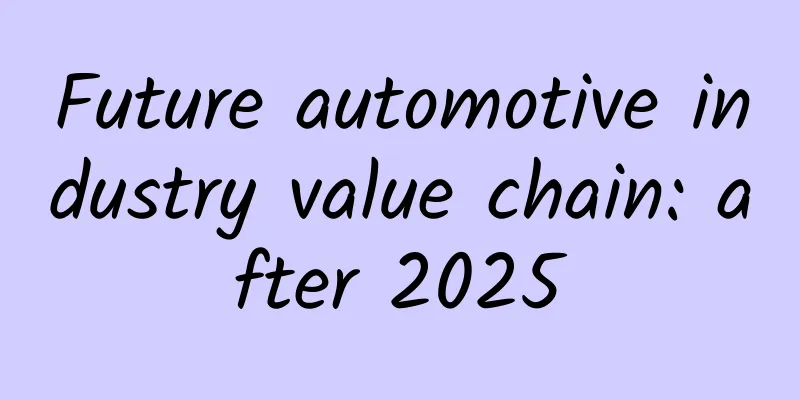Future automotive industry value chain: after 2025

|
In recent years, the topic of disruptive changes in the automotive ecosystem has dominated the relevant industry discussions, and a fundamental restructuring of the entire automotive value chain seems inevitable. However, many developments are still speculative and the future path is still unknown. Deloitte has launched the report "Future Automotive Industry Value Chain - 2025 and Beyond", which explores the most important driving factors for the development of the future value chain in today's uncertain times, and how automotive industry leaders should make investment decisions so that they can have corresponding professional technology, production capacity and stable supply chain when market demand emerges. Through scenario-based business modeling, this report identifies four reasonable settings that the value chain of vehicle companies may have in 2025, helping automotive industry decision makers to systematically verify their own forecasts and strategic plans. Key points/main results of Future Automotive Industry Value Chain - Beyond 2025:
Based on the survey results, this study made the following four predictions on the future development of vehicle manufacturers:
From various scenarios, automotive companies should actively invest in electric mobility, autonomous driving and Industry 4.0. OEMs need to evaluate various driving factors based on internal and external environments to be fully prepared to cope with future challenges and continue to occupy an important position in the market after 2025. The PDF version will be shared to the 199IT exchange group. If you want to support our development, please join us! |
<<: TSMC needs the mainland market to break Samsung's game
Recommend
Data operations: 8 essential data analysis methods for operations!
When it comes to data analysis, people often thin...
1056 seconds! China's "artificial sun" EAST sets a new record for the longest discharge
On the evening of December 30, 2021, the world re...
Application of face stylization technology on mobile terminals
Preface With the explosion of concepts such as th...
Don't bring these two things with you on the high-speed rail during the Spring Festival travel rush! It is recommended that you do these four things when you return home in the early days →
January 6 The State Council Information Office he...
Autolayout constraint animation (what a cute trick!)
Original article: Animating Autolayout Constraint...
Dialogue with cocos author: In-depth exploration of cocos one-stop solution
Chukong Technology released a blockbuster news, a...
Changing managers has become a habit in the United States. No one can last more than five years and the next one will have a hard time.
According to a recent comprehensive foreign news ...
"Hand in hand" in outer space? A review of the "highlights" of China's international space cooperation
After decades of efforts, China's space indus...
Review of 4 private domain traffic live broadcast cases
All brands are paying close attention to private ...
WeChat and Alipay may face strong rivals? What is the origin of digital RMB?
[[423271]] Recently, the keyword "digital RM...
Even if I die, I want to watch the people of Lankao heal the sand dunes! 58 years have passed, why do people still miss him?
(Image source: CCTV.com screenshot) These two pho...
Open an account and display style for B station advertising!
There are so many advertising resources on Bilibi...
Cherry House Buying Training 2
Cherry House Buying Training 2 6 VIP privileges a...
IOS Team Programming Standards
[[201429]] Preface Demand is temporary, only chan...
Will OPPO and vivo, which have invested in chip companies, get involved in independent mobile phone chips?
Driven by industry giants such as Huawei, Samsung...









